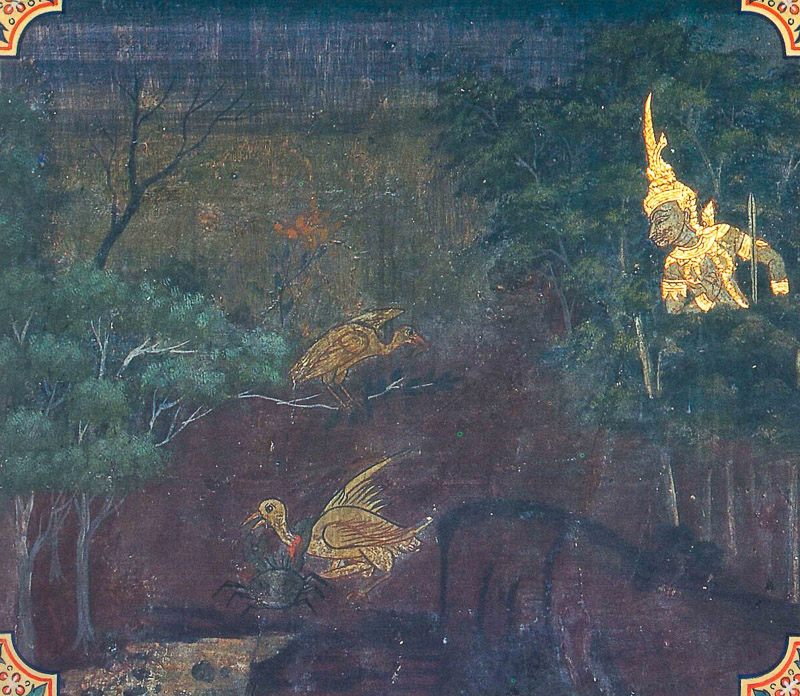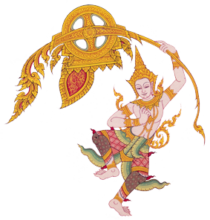
The Bodhisatta was once a tree fairy who lived alongside a lotus pond. A smaller pond elsewhere in the forest was full of fish, but it was the dry season and the water had dropped very low, making food scarce and the water hot. A wicked, clever crane saw this as an opportunity to eat all the fish. He told the fish he would carry them one by one from their dwindling pond to the larger, better lotus pond. Knowing that cranes are the enemy of fish, they were skeptical, but the crane said he would take one fish to swim in the lotus pond, and then bring it back as proof. They sent a large fish, too big for the crane to swallow, as a scout, and he told the other fish that the lotus pond was wonderful, so they all agreed to move. The same large fish was the first to go, but this time the crane dropped it into the fork of a tree, pecked it to death, and picked the bones clean. And all the other fish met the same fate, their bones piling up around the base of the tree.
The last resident of the small pond, a crab, really wanted to move to the lotus pond, but he did not trust the crane and assumed the fish had been eaten. He told the crane that he feared riding in his beak like the fish did because he might fall, but his claws were strong and he could hang onto the crane’s neck. Not suspecting any tricks, the crane agreed. When the crane veered toward the tree, the crab protested, and the confident crane told him he was going to eat him like he did all the fish. But the crab replied that he was tricking the crane, not the other way around. “If I am going to die, you will too,” and he squeezed the crane’s neck to make his point. The crane began to cry and tremble from fear and agreed to put the crab in the lotus pond. And as the crane landed, the crab snipped off his head.
The Bodhisatta praised the crab, preaching, “There is no reward for tricking people with deceit. See what the crane got in the end,” and the animals of the forest applauded his wisdom.
In the Lifetime of the Buddha
One of the Buddha’s disciples was a masterful tailor and he sewed robes for many disciples. But this robe-making disciple was also devious. He took brand-new cloth from the disciples, but gave them robes made from old cloth, hiding the imperfections with a dressing made of starch so the patches would not show until after the robe was washed.
When a simple village tailor who regularly ran the same ruse heard about this cultured, urbane disciple, he wanted to scam the scammer. He put on one of his own sham robes and visited the monastery. When the robe-making disciple saw the robe, he wanted to have it, so he exchanged some brand-new cloth for it. When the robe-making disciple washed it and found he had been scammed, all the other disciples heard about it.
The crane and crab were earlier births of the robe-making disciple and the village tailor. When the Buddha heard some of his disciples discussing this incident, he told them this story so they knew that in the past the robe-making disciple had been equally dishonest and also got swindled by the village tailor.
